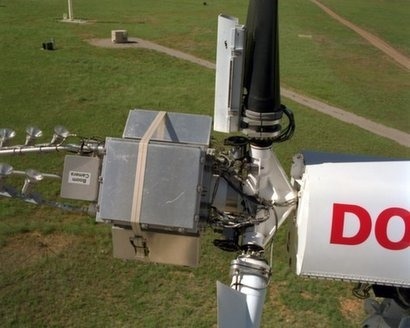
Vaisala is to conduct the study in collaboration with NOAA and DOE national laboratories. Following the initial design and planning phase, the company will deploy measuring equipment over an 18-month period, beginning in mid-2015, in order to analyse the specific environmental characteristics affecting wind flow patterns such as soil moisture, surface temperatures and the unique topographical features of mountain-valley regions. These observations will then be used to update and improve the computational and atmospheric physics underpinning current forecasting models. The third phase will generate enhanced model predictions which will be compared to baseline forecasts generated by existing models in order to evaluate the success of the initiative.
The study will concentrate on wind energy deployment in complex terrain which is an increasingly prominent issue as the wind energy industry expands into remote and challenging territory. It will focus on the Columbia River Gorge region between the states of Washington and Oregon. This is a rugged area known to feature all the atmospheric phenomena known to impact wind energy.
The work carried out in this study will further improve the accuracy of short-term 0-15 hour wind power forecasts in mountainous areas across North America and worldwide. Furthermore, Vaisala will lead a team tasked with developing decision support tools to enable wind energy operators to quantify wind variability and performance uncertainty on an unprecedented level.
Atmospheric phenomena encountered in more complex geographies worldwide have an impact on wind variability, the reliability of short-term forecasting and overall performance of wind energy projects. In turn, this increased variability generates uncertainty that may affect not only grid integration and the ability of developers and operators to fully exploit abundant wind resources in mountainous areas, but also deters international investors from promising, emerging markets like Latin America, Asia Pacific, and Africa, where complex terrain poses a consistent challenge.
The Wind Forecasting Improvement Project 2 (WFIP2) is a DOE initiative is aiming to enhance the reliability of wind forecasting around the world, but particularly in challenging areas. In doing so, it will also seek to reduce the cost of grid integration while also helping operators to optimise performance through more effective short-term modelling of wind variability.
Vaisala and its partners will be conducting a comprehensive 3-phase study of atmospheric phenomena in complex terrain in order to enhance the widely used Weather Research and Forecasting (WRF) model and the National Oceanic and Atmospheric Administration’s (NOAA) Rapid Refresh (RAP) and High Resolution Rapid Refresh (HRRR) models. This will also further improve the accuracy of short-term 0-15 hour wind power forecasts in mountainous areas across North America and worldwide. The Vaisala team will also be tasked with developing decision support tools to enable wind energy operators to quantify wind variability and performance uncertainty on an unprecedented level.
“Complex terrain creates substantial forecast challenges for wind plants in most regions” said Jack Peterson, Manager of Energy Operations Support at Southern California Edison. “We have seen many situations where the forecasts are dramatically different at neighbouring wind farms with only slight elevation changes. Improving the science behind forecasts is an important step and will greatly benefit the industry by removing some of the challenges we face.”
Mr Peterson will play a supporting role to the Vaisala study team which includes the National Center for Atmospheric Research, the University of Colorado Boulder, Sharply Focused, Lockheed Martin, Texas Tech University, the University of Notre Dame, Iberdrola Renewables, Southern California Edison, Cowlitz County Public Utility District, Eurus Energy, Bonneville Power Administration, and Portland General Electric.
According to the DOE, access to better forecasts will enable wind energy plant operators and industry professionals to ensure that wind turbines operate closer to maximum capacity, resulting in lower energy costs for consumers.
Dr. James McCaa, Manager of Advanced Applications at Vaisala and Principal Investigator for WFIP2, added that improved modelling and forecasting techniques will be able to facilitate more efficient variability calculations and predictions, a key factor for developers and operators worldwide involved in making crucial long-term investment decisions.
For additional information:

